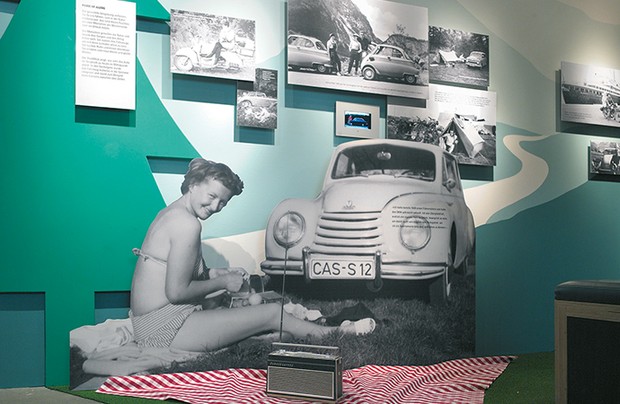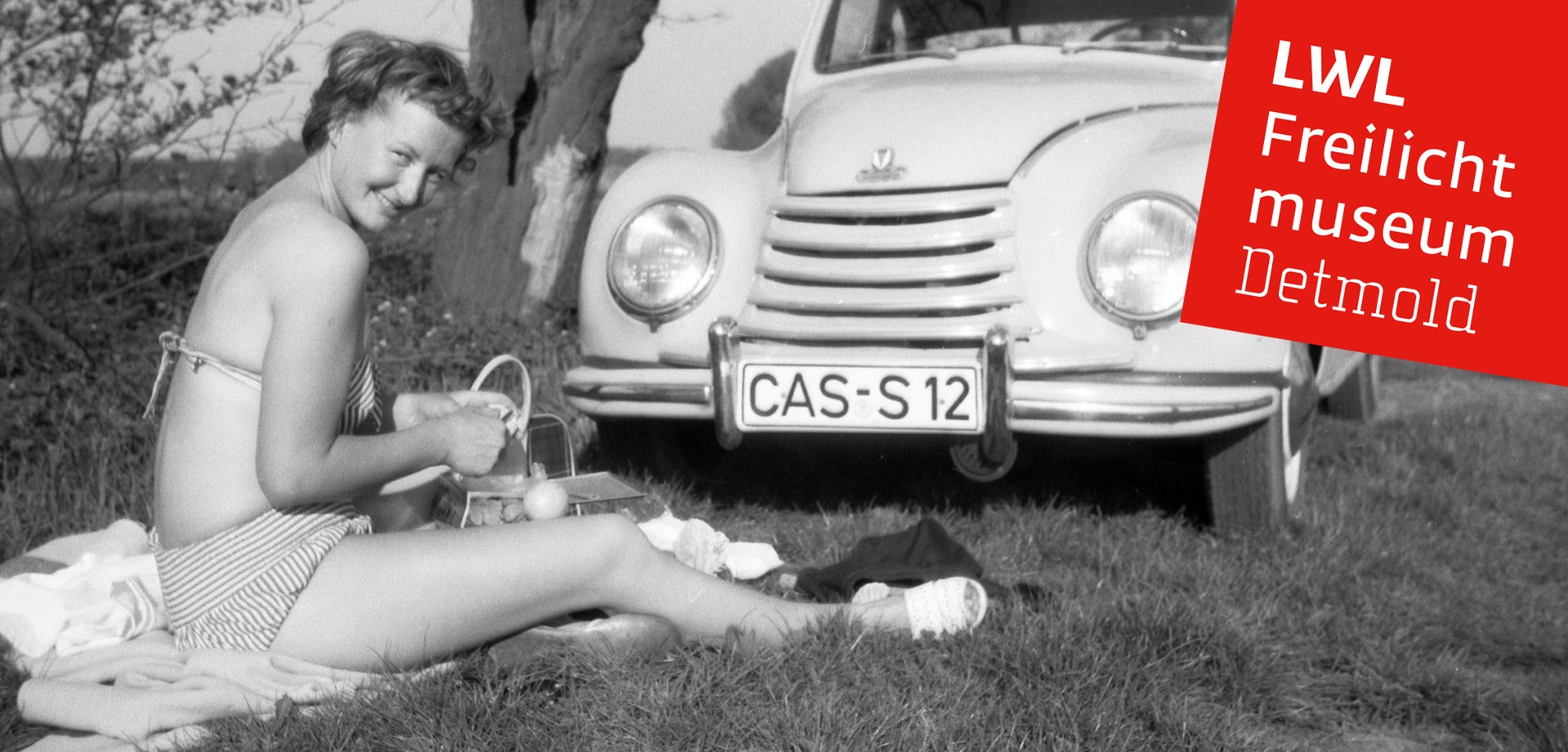
Retrospect
Overview of past exhibitions
Here you will find an overview of our exhibitions of recent years.
Past exhibitions
2021: Juhubiläum (Jubilee)
The 2021 season was all about the "jubilee". On 7 July 1971, the LWL Open-Air Museum Detmold opened its doors for the first time. A lot has happened since then: numerous historic houses have been gradually built, gardens and landscape have been shaped and many special exhibitions have been shown.
At 50 area stations, you learned exciting, new and otherwise hidden things about the museum, from secret signs to animal whispers.
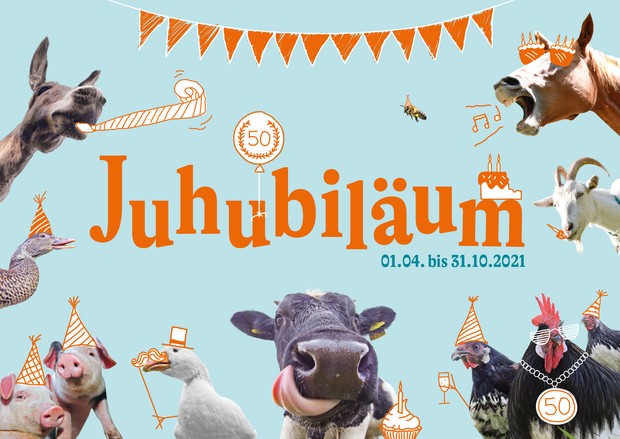
2020: Erzähl mir was vom Pferd! (Tell me about the horse!)
Anyone who thinks that life is not a pony farm has clearly done the math without the Westphalians. After all, they have a very special relationship with horses, whether in their leisure time, sport or work. The special exhibition 2020 focused on these special relationships in impressive photo series. The photographer Tuula Kainulainen has set out on a journey through the horse country of Westphalia and captured the interaction between man and animal in very different everyday situations.
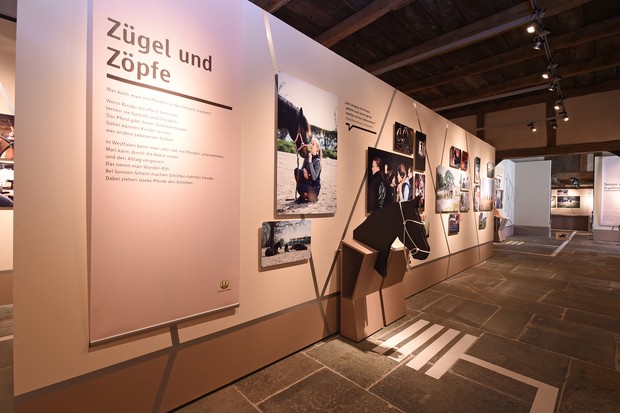
2019: Vergiss die #liebe nicht! (Do not forget the #love!)
"Love is all you need", the Beatles already knew that in 1967. But how did the model of romantic love come about and what does love mean today? Who or what do we love? And how do our concepts and notions of "love" change with all the digital possibilities on the internet?
These have been the questions we dealed with in this theme year 2019.
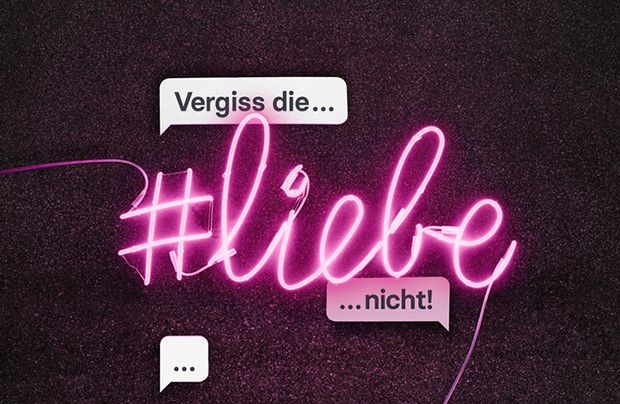
2018: Raus aus dem Spießerglück (Out of the philistine happiness)
The moon landing, the beginning of color television, the Woodstock Festival or John F. Kennedy - in retrospect, the 1960s today often appear as the decade of social upheaval and general modernization. But what about the spirit of optimism at the time in the countryside? In 2018, in the LWL-Open-Air Museum Detmold, the unknown sixties took center stage under the title "Get out of the bad luck". It portrayed a time that was shaped by the spirit of optimism of the '68s and also by the persistence of established lifestyles.
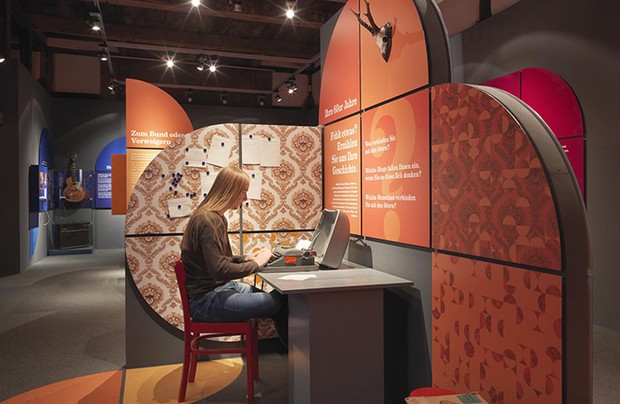
2017: Ene, mene, muh ...
On the basis of individual children 's stories, the museum showed in the year 2017, how much the worlds of play and experience have changed in the 20th century. The exhibition barn in the village of Paderborn was centered on very personal objects from various decades, which were representatives of this change.
At various stations in the museum grounds, the otherwise hidden stories of the former childish inhabitants of the historic buildings were also brought into focus through installations.
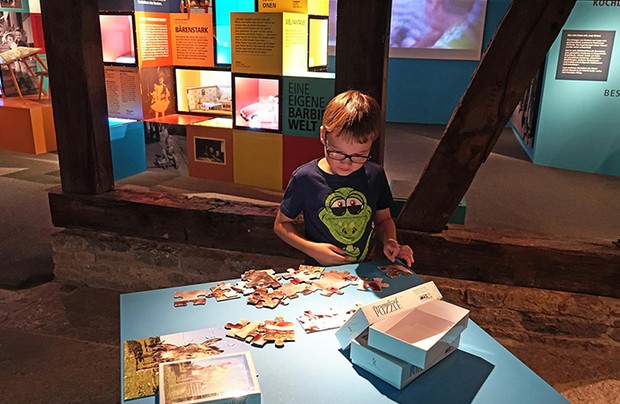
2016: Scheiße sagt man nicht! (Don't say shit!)
It is intimate and at the same time commonplace: going to the bathroom. In daily business personal ideas of shame, disgust and intimacy play a big role. Under the title "Do not say shit!", The LWL Open Air Museum Detmold 2016 focused on this central theme of physical culture.
The special exhibition in Paderborn village was designed as a public toilet: with tiled walls and lots of "toilet graffiti". Visitors experienced there as well as on the basis of various installations in the area more about the history of the "quiet village", the hygiene and many unspoken about the toilet. At the same time, frequently asked questions from the visitors were answered: How does your heart get into the door of the outhouse? Since when is there toilet paper?
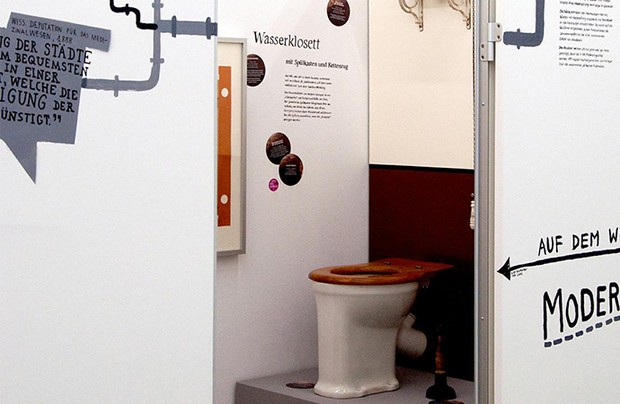
2015: Geraubte Jahre (Stolen Years)
Millions of people did forced labor during the Second World War. Among other groups, they included civilians forced to leave and forced labor from many countries, as well as prisoners of war from various nations. In Westphalia, foreign foreign workers also shaped everyday life. Objectives of the theme year "Stolen Years. Everyday life of forced labor in Westphalia" were: To make the living and working conditions of these people comprehensible, to illuminate their relations with the German population and to remind them of their suffering. The museum's collection includes several series of glass plate negatives showing historical footage of French prisoners of war and suspected civilian workers. They were presented in 2015 in a special exhibition. In addition, exhibition stations throughout the museum grounds and in individual historical buildings provided insights into the everyday life of forced labor in Westphalia.
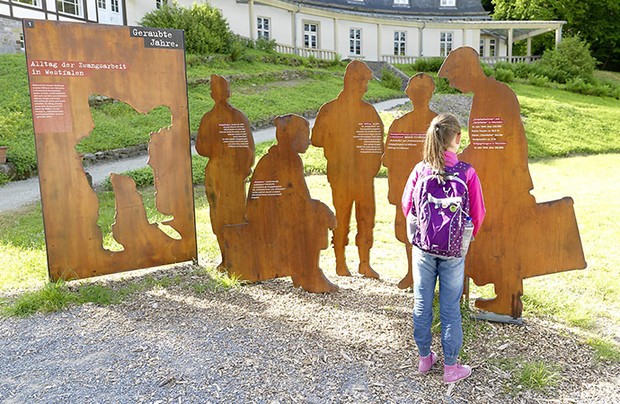
2014: Marsch, marsch ins Beet (March, march into the patch)
In 2014 we were "New in love with old varieties". The visitors could go on a discovery tour through the garden variety and get to know the Lippische palm, Chinese vegetable salmon or Johannislauch. Throughout the museum grounds, old, regional crop varieties and interesting facts about the garden were presented. For example, it has also been shown that it is very easy to grow vegetables even in the smallest of spaces. Old rice sacks or even empty milk cartons can be recycled and turned into miniature flowerbeds. With a sunny spot on the windowsill, on the balcony or in the backyard, everyone can become a vegetable farmer.
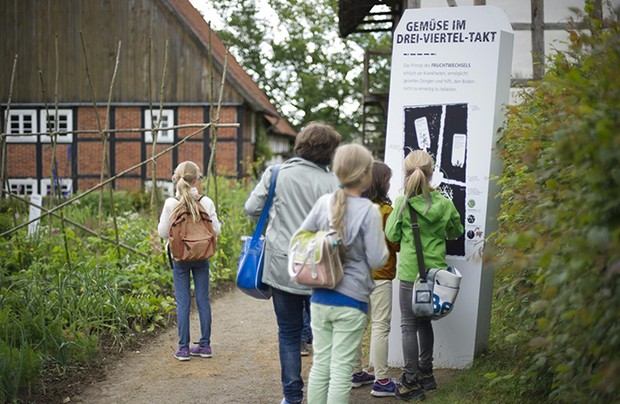
2013: Verflixt! Geister, Hexen und Dämonen (Darn! Ghosts, witches and demons)
Do superstitious ideas fit into our modern society? And how did people protect themselves from horrors in the past? In 2013, the LWL Open Air Museum Detmold got to the bottom of these questions. What is a "Böxenwolf"? What exactly does the "second face" mean? And which superstitious ideas are still widespread today? Visitors had exciting insights into the subject of superstition.
A walk through the special exhibition showed that the motives for the belief in the supernatural are not so different today from those of our ancestors. However, the expressions of superstition have changed over time. For example, a magic hole on the house is rarely practiced today, but wishing for a shooting star is quite commonplace. On the terrain stations special "magical" places were highlighted, pointed to protection signs on houses, experiences of fear experienced or provided insights into the technique of "ghost photography".
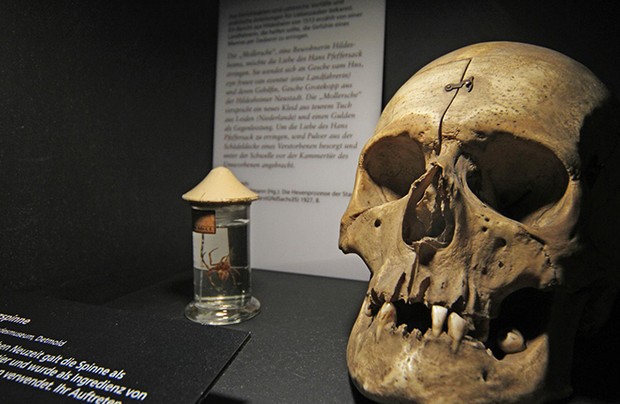
2012: Schatzhüter (Treasurer)
They often accompany us for a lifetime, keep secrets and treasures, keep memories and are always faithfully at your service when space is needed for the quick cleanup: chests. This first multifunctional piece of furniture was the focal point of the 2012 season for the LWL-Open-Air Museum Detmold. Chests from five centuries were shown.
In the historic houses there were chests with different contents to see. And in the exhibition, variants of this versatile piece of furniture were presented and the significance of the chest for folkloristic research was explained.
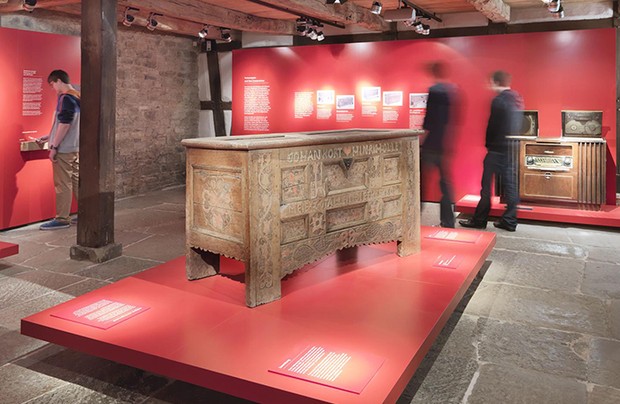
2011: Bitte recht freundlich! (Please be quite friendly!)
In 2011 the photography was under the motto "Please be quite friendly! The photo portrait "in focus. In many places museum grounds there were historical portraits to discover, which showed the former inhabitants of the houses. The visitors themselves took on the role of the photographer: through the viewfinder of the cameras set up for the exhibition in the field, the museum guests can see historical portraits of the former inhabitants.
Two special exhibitions deepened the subject of photography. A cabinet exhibition was dedicated to the history of the portrait. And in the exhibition barn in the village of Paderborn, the LWL open-air museum also presented portraits of men from the 1930s and 1940s from the former photo studio Kuper in Rietberg, which was rebuilt in the museum in 2010. This exhibition ran under the title: "Strong Men".
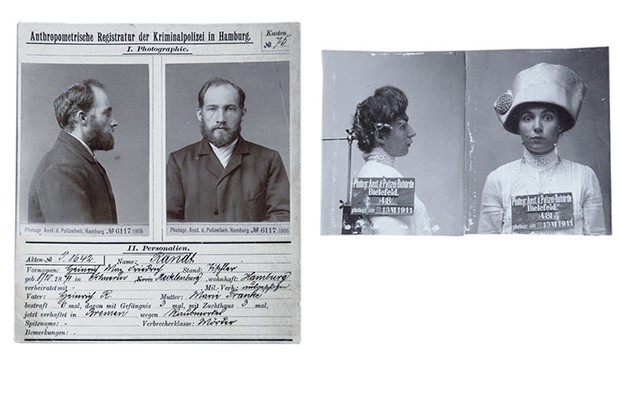
2010: Planet Westfalen (Planet Westphalia)
What causes people to leave home? Where does she go? What do you take with you on your way to new shores? How do you shape your new habitats? The special exhibition "Planet Westfalen" 2010 dealt with these questions. Original objects from America emigrants, Lippian wanderers or refugees told of individual destinies and cultural changes. Each topic complex was presented by a protagonist who made his individual story vivid.
The outdoor area was mainly devoted to Westphalian architectural and cultural history. Which way did the tulip motive go until it arrived in Westphalia in the 17th century? Why did craftsmen build windows in the 18th century based on the Dutch model? And how does the potato from South America come to Westphalia?
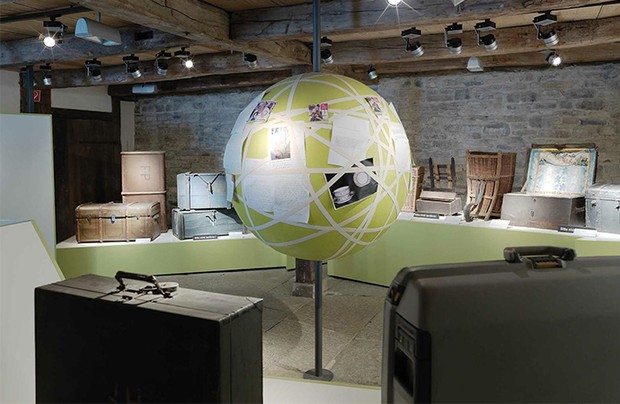
2009: Angekommen. Russlanddeutsches Leben (Arrived. Russian German life)
20 years after the opening of the "iron curtain", the theme year 2009 dealt with the arrival and the life of Russian Germans in Germany as well as their previous living conditions in Russia and the Soviet Union. Russian Germans from Detmold and the surrounding area were portrayed by the artist Martin Rosswog and the living conditions were made visible with documentary photos. The exhibition also featured memorabilia from the ancient homeland, such as the last plates of old grandparents' crockery, the death certificate of the long-lost father, or the enamel portraits of the parental graves in the Soviet Union.
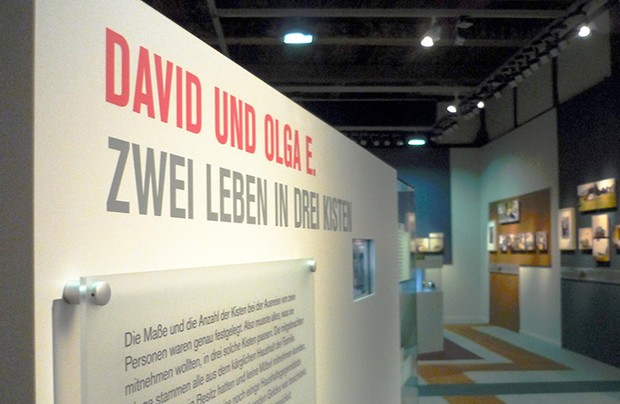
2008: In Fahrt und mopsmobil (In driving and mopsmobil)
Under the motto "On the move. Love, death, speed", visitors experienced different facets of mobility in the first theme year 2008. Vehicles such as a wedding sleigh, a hearse, a fire engine from Opel, model "Blitz", or a carriage of the Lippe princely family were staged on the trails in the grounds and in the historic houses. The special exhibition in the village of Paderborn was dedicated to the relationship between man and vehicle, which is still exciting and contradictory.
A second special exhibition in 2008 entitled "mopsmobil - how the dog moves the world" gave insights into the moving and moving relationship between man and dog in the former pheasantry. Dogs used to serve as workhorses, today they move the hearts of people and a whole industry with consumer products for four-legged friends. The exhibition was developed in cooperation with students from the Department of Folklore / European Ethnology of the Westfälische Wilhelms-Universität Münster.
